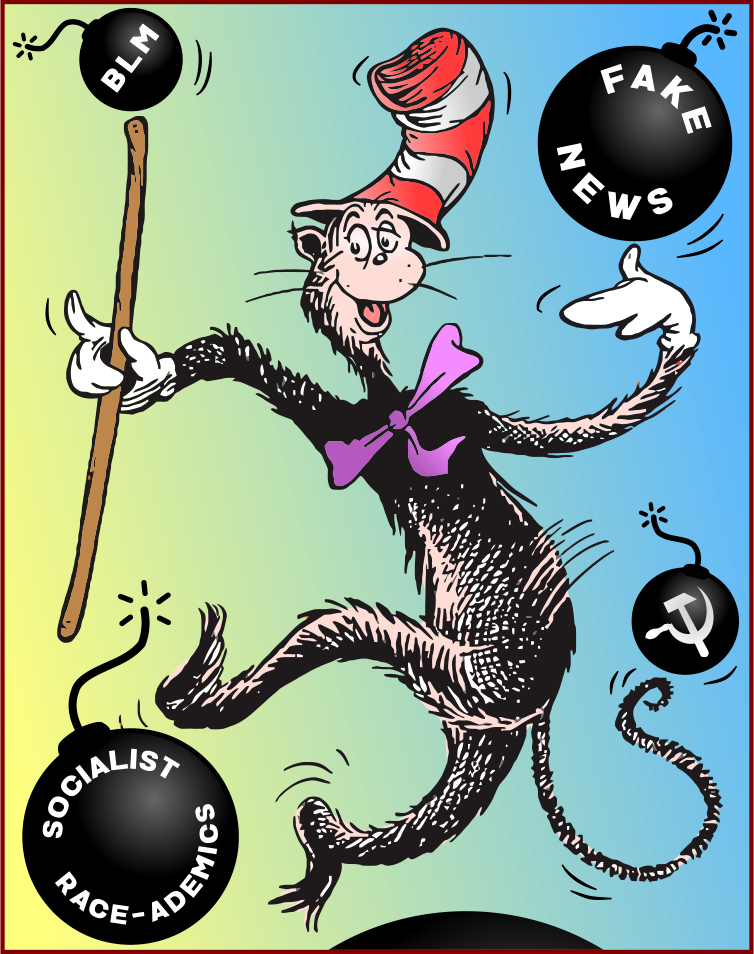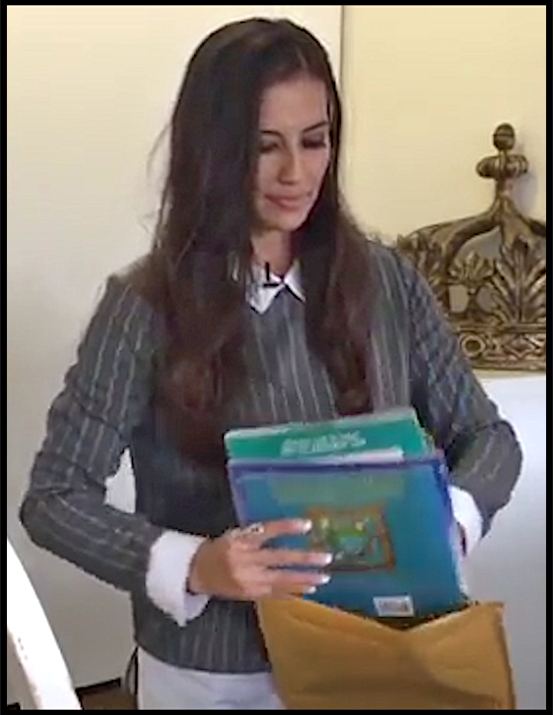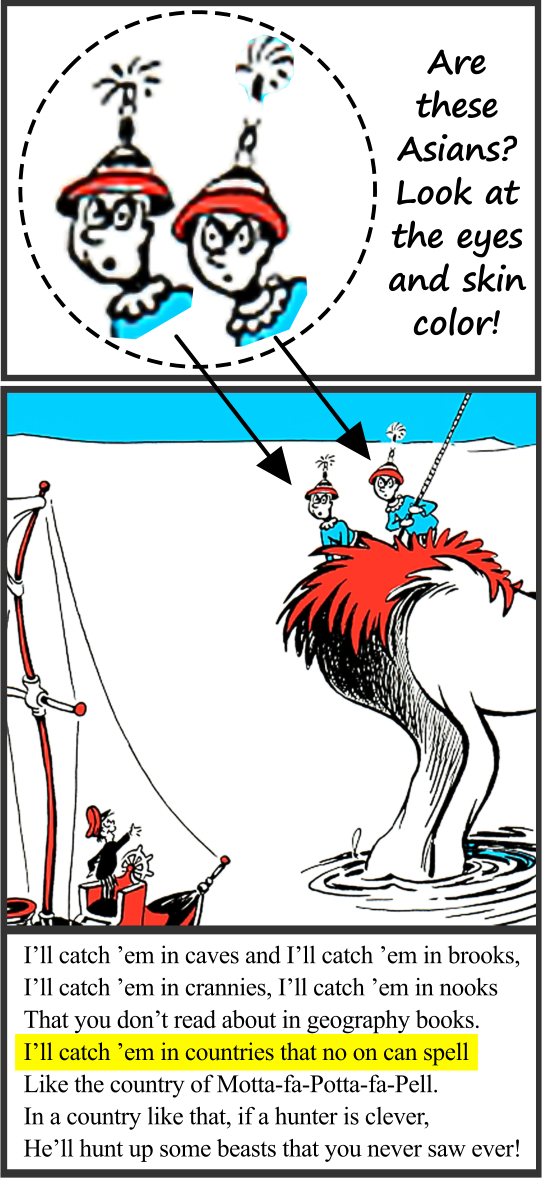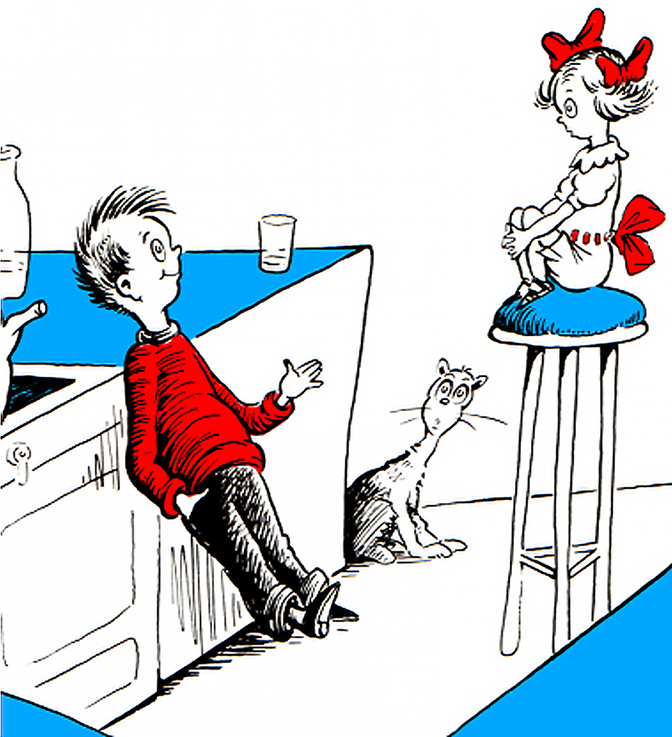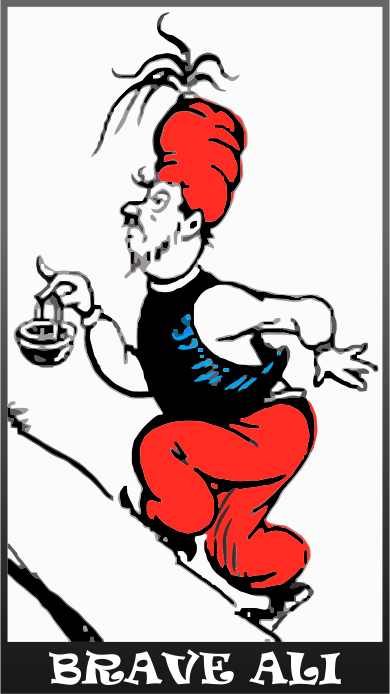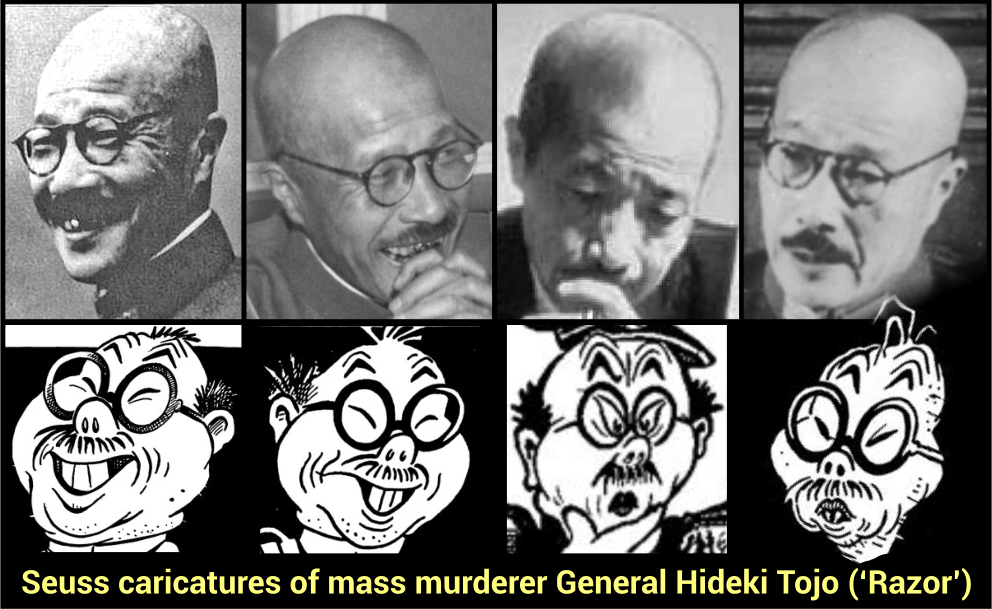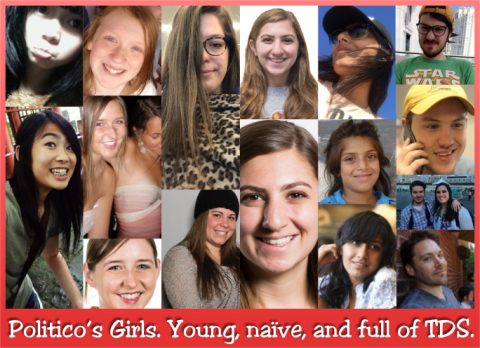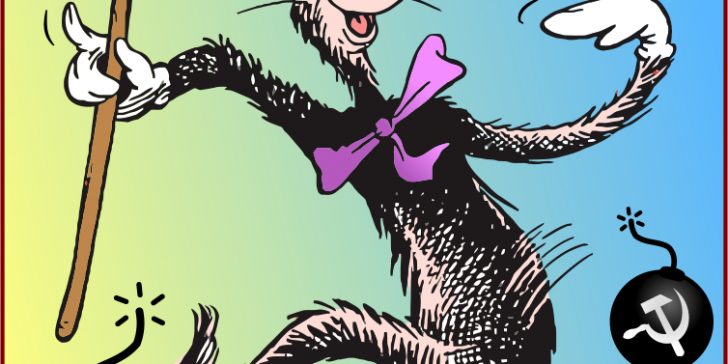
Liberals loved Dr. Seuss’s children’s books because the cartoonist and author, Theodor Suess Geisel, was one of them. He drew some cartoons in his youth, back in the early part of the 20th century, that became politically incorrect decades later. Still, the Left cared nothing about that until Melania Trump praised Dr. Seuss in 2017.
For some context, ‘The Cat in the Hat’ was created in 1957 when Seuss was fifty-three. His children’s books were a great success, praised by liberals and lefties everywhere. Michelle and Barrack Obama celebrated the author in 2015. President Obama told a group of interns, “Pretty much all the stuff you need to know is in Dr. Seuss.”
On Mar 2, 2017, Melania Trump made her first solo venture as the First Lady to visit sick children in a Manhattan hospital. It was both Dr. Seuss’s birthday and National Read Across America Day, so Mrs. Trump read to the children from a Dr. Seuss book, stating that the author was an inspiration to her. That was all the desperate Left needed.
The next day, Mar 3, 2017, a pair of far-left nobodies from Seattle, Washington, and San Diego, California, began an attack on Seuss that rages to this day, accusing him of racism. The married activists had three motives:
- To paint Melania Trump as a racist by association and, by extension, discredit her husband.
- To gain brownie points from the academic community – good for their careers in college.
- To entice parents away from Dr. Seuss’s books and toward their own children’s book library.
Fake News quickly took up their cause to smear the POTUS by implication. The resulting tsunami of Fake News attacks on Seuss led to the cancellation of six Dr. Seuss books.
So, who were these knuckleheads, anyway?

39-year-old Katie Ishizuka-Stephens and 36-year-old Ramon Stephens are race-obsessed college critters. Programmed by far-left schools and universities they never escaped, they see everything through a skin-color lens. Indeed, I would be remiss in not mentioning that Katie is half-white and half-Japanese, while Ramon is black. These details matter greatly to the pair, who likely chose each other genetically rather than by any other metric.
Being half-white, Katie still had 50% evil white privilege. By marrying black, she reduced that wickedness greatly, earning social credit with communist college czars and social media witch doctors. Of course, Katie could have accrued more points by marrying a black woman, or better still, a black transsexual, and it is still possible since Ramon could make the transition.
Ramon is already acting gaily; he added an accent to his name recently, calling himself Ramón—but life was not always so milquetoast. To see how much race propaganda the poor soul was force-fed, see his most recent CV here (backup here), and notice his name was Ramon, sans accent. It was all Critical Race Theory this, Racial Identity Theory that, Ethnic Studies the other, Anti Blackness, White Supremacy, you name it. If it was racist, lecturers shoved it down the poor guy’s neck. All the ‘courses’ he studied add up to precisely zero, intellectually, culturally, historically, and ethically. He spent many years damaging his mind with their claptrap.

It is a similar story with Katie Ishizuka, who may be Katherine E. Ishizuka, since that name comes up in searches as having lived at Ramon’s addresses between Seattle, WA, and San Diego, CA. The far-left couple claims to be married, and for a while, Katie hyphenated her surname to Ishizuka-Stephens, but none of the research defines her as being Ramon’s wife. Perhaps that is why she deleted Stephens from her name, at least online.
It is not certain they are still together, as there is precious little about the twosome anywhere. Many pages that used to include their photos are now devoid of them as if owners were asked to remove the pictures. This article about them once displayed their photographs, as an archived page shows (backup here).
Why did they request their photos be removed? Even Katie Ishizuka’s Facebook page only has one picture of her with her back turned. It appears she deleted all other content on that site. Another article about colored children’s books used to contain a photo of Katie Ishizuka along with information about her book lending service, but now both are gone from there. Although her photo was removed from the page, it still exists on the server here.

A Google search for “Ramon Stephens Seattle” without quotes brings up a Seattle photographer’s 2012 page, inviting you to watch a video of Ramon singing a song he helped compose. The photographer writes, ‘Have a look at “That’s Our Name” below!’ The trouble is there is nothing below but an empty space. The source code provides a YouTube that may be seen here (backup here). Yes, that dude in the tacky purple sunglasses is Ramon nine years ago, aged 27. So, why did he ask the owner of the site to remove the video from the page? Why all the secrecy and cover-up from Katie and Ramon?
Did something happen to make the couple go so camera-shy?
Scandals, drugs, and manslaughter
A search online brings up a couple of scandalous stories involving Ramon’s father, Fred Stephens II, and Ramon’s older brother, Fred Stephens III. Ramon’s father was largely responsible for the Seattle Public Schools financial scandal, which cost taxpayers millions of dollars.

The other event involved Ramon’s older brother, who was killed in 2008. Fred Stephens and his friend Michael Hessemer had been ‘roughhousing in a hot tub after a night of drinking beer and Red Bull-and-vodkas, and snorting what a defense attorney later called a “golf-ball-sized pile of cocaine,”‘ according to the Seattle Weekly when Fred drowned. Hessemer was found guilty of manslaughter the following year.
Was this why Ramon became Ramón and deleted so many of his and Katie’s photos and social media? Perhaps they did not want academia to know they were connected to such depravity. It may explain why they moved to La Jolla, San Diego, in the first place, 1,250 miles and a 20-hour drive south of Seattle, Washington.
Family
In any event, Katie Ishizuka and Ramon Stephens have two young boys, eight and six, who Ramon calls black (3:20 mark) but are a quarter white, a quarter Japanese, and half black. They will have to find ways to atone for their 25% white genes when they go to college, as their mother did, probably by marrying blacks.
Ramon almost got it right in another interview here when he said his sons were half black, quarter Japanese, and a quarter white, but then said, “I mean, you can tell that they’re black.”
In that same interview, you can see how badly Ramon speaks. His words shoot out of his mouth like a blur. See if you can say the following in 28 seconds because Ramon did:
And so, bud th’ other it is like th- they’s two pards to dis, so der’s a space of resilience right, where we see, ya know, parens’re like ‘nyeah this is so great’ ’n y’ kin see the impact on their child and not bein’ fraid to spress der blackness, right, not bein worried about wear’n braids ’n geddin’ punished for it, or looking a certain way and assumptions bein made about like your character that aren’t, that aren’t necessarily true, but then there’s this fight, right, when you go to the institutions and you talk about and you share this these stories, right?
Right. Just think, your taxes pay this dimwit to make clones of himself out of your children. If you send your kids to college, they will end up like Ramon.
Ramon’s and Katie’s Subscription Business
The husband-and-wife team collected a library of children’s books full of colored kids, to lend out to colored parents. They promote the service online (e.g., here and here), in competition with Dr. Seuss. Katie and Ramon’s book collection’s theme is racially motivated. White children rarely feature in the books, and race issues cover all the twosome’s ranting.
The library’s purpose is to teach colored children that skin color is their paramount defining feature, the kind of racist thinking Republicans spent centuries trying to change.
Since the Civil War of 1861, conservatives taught society to do away with racist thinking and treat all men, regardless of color, equally. Democrats resisted this mightily until the age of baby boomers.
TV shows like Sesame Street (premiering on public TV in 1969) worked hard to teach children that color made no difference and that all children were equal. The puppets in their episodes were mixed colors and none of the characters ever mentioned race. The Flower Power generation brought hundreds of millions of children up with this idea: that skin color was not important.
Between the 1960s and the 2010s, the Left not only accepted this premise but promoted it as their own. Now their spoiled offspring have abandoned such principles, returning to racism with a vengeance. If Katie and Ramon were running Sesame Street, all the puppets would be black and brown. Maybe if hippies had not ditched child discipline, this would not have happened.
Phantom Library Myth
In a 2017 interview, Ishizuka said, “When I went to our nearest public library to request every children’s book they had featuring Black characters, the librarian came back with a list of three.” Her husband Ramon repeated this story in phone interviews here and here. They never say which library because it is a very deceptive tale:
- Most children’s books show a variety of children that reflect American society. All races are included.
- Ishizuka asked the librarian for children’s books featuring black children only.
- Library catalogs are not organized racially, so the librarian would have to search shelves by hand to find books featuring mostly black kids.
- Young librarians are busy, overworked, and often dismissive of readers’ sillier requests.
- If the library’s lending limit is ten books, and a person with a stack of seven books in their trolley asks a librarian for a certain type of book, how many will the librarian bring back? The librarian has to return leftover books to the shelves, and why carry a hundred books to Ishizuka if Ishizuka can only borrow three anyway?
The Cat is Out of the Bag
On Mar 3, 2017, the day after Melania Trump read Dr. Seuss to dying children, Katie Ishizuka posted a piece called ‘The Racist History of Dr. Seuss’ on a black activist website. The left-winged rant was distributed widely by Black Lives Matter Media and promoted by Fake News – solely to besmirch Melania Trump. Two months later, spurred on by such publicity, Ishizuka published another condemnation of Dr. Seuss. Once again, Fake News used it to smear Melania.
Not satisfied with two such hit pieces, Katie and Ramon wrote a third. The 50-page attack (backup here) again accused Dr. Seuss of racism. The blitz would enable Fake News to smear the Trumps as racists, help to promote Katie’s and Ramon’s book library and divert parents away from Dr. Seuss’s books towards theirs.
Predictably, the two race-ademics made many errors, miscalculations, and exaggerations regarding Seuss, who could not defend himself or take legal action since he died in 1991, aged 87. The poorly written paper offered no visual examples either. Readers had to be content with the activist couple’s misleading and ridiculous descriptions. Visual examples would have weakened their already weak case.
Listening to these two, it becomes clear they cannot pronounce words properly and know little grammar. Were it not for spell and grammar checkers, their writing would be much worse than it already is. They are a fine example of the race-obsessed semi-literate academics commonly found yapping about social justice blah today. The following six Dr. Seuss books will no longer be printed, thanks largely to these charlatans:
- And to Think That I Saw It on Mulberry Street (1937)
- McElligot’s Pool (1947)
- IF I RAN the ZOO (1950)
- Scrambled Eggs Super! (1953)
- On Beyond Zebra! (1955)
- The Cat’s Quizzer (1976

Answering Their Argument
I now answer statements made by Katie Ishizuka and Ramon Stephens (blue italic) in their 50-page smear (backup here) campaign against Dr. Seuss’s books. Under the heading ‘Research Methods’ (pages 10-11), they wrote:
Frequency counts that assessed the extent to which characters of color and White characters are represented in Dr. Seuss’ books included:
1) A count of the number of times White human characters appear in each children’s book
2) A count of the number of times human characters of color appear in each children’s book
Katie’s and Ramon’s subscription book library includes almost no white children. How will such books help colored children assimilate? In 1937 blacks only comprised 9.7% of the population, while whites made up around 87%. With almost 90% of Americans being white, Seuss had every right and reason to write about and draw predominantly white characters. Since Katie Ishizuka and Ramon Stephens wish to criticize people based on racial diversity, why don’t they start with their ancestral homes, Japan and Africa? Then they can take a look at China, Russia, Korea, India, Pakistan, Iran, and most of the rest of the world. How dare they pick on white Americans, who opened their arms up to the world’s populations?
In the book And to Think That I Saw It on Mulberry Street, exotification and stereotypes are seen when a Chinese man is drawn with chopsticks and a bowl of rice in his hands, bright yellow skin, slanted eyes, a long black braid, and a conical hat.
If Katie or Ramon read the book, they would know that none of the things they complain about happened since they were nothing more than a figment of a young child’s rich imagination.
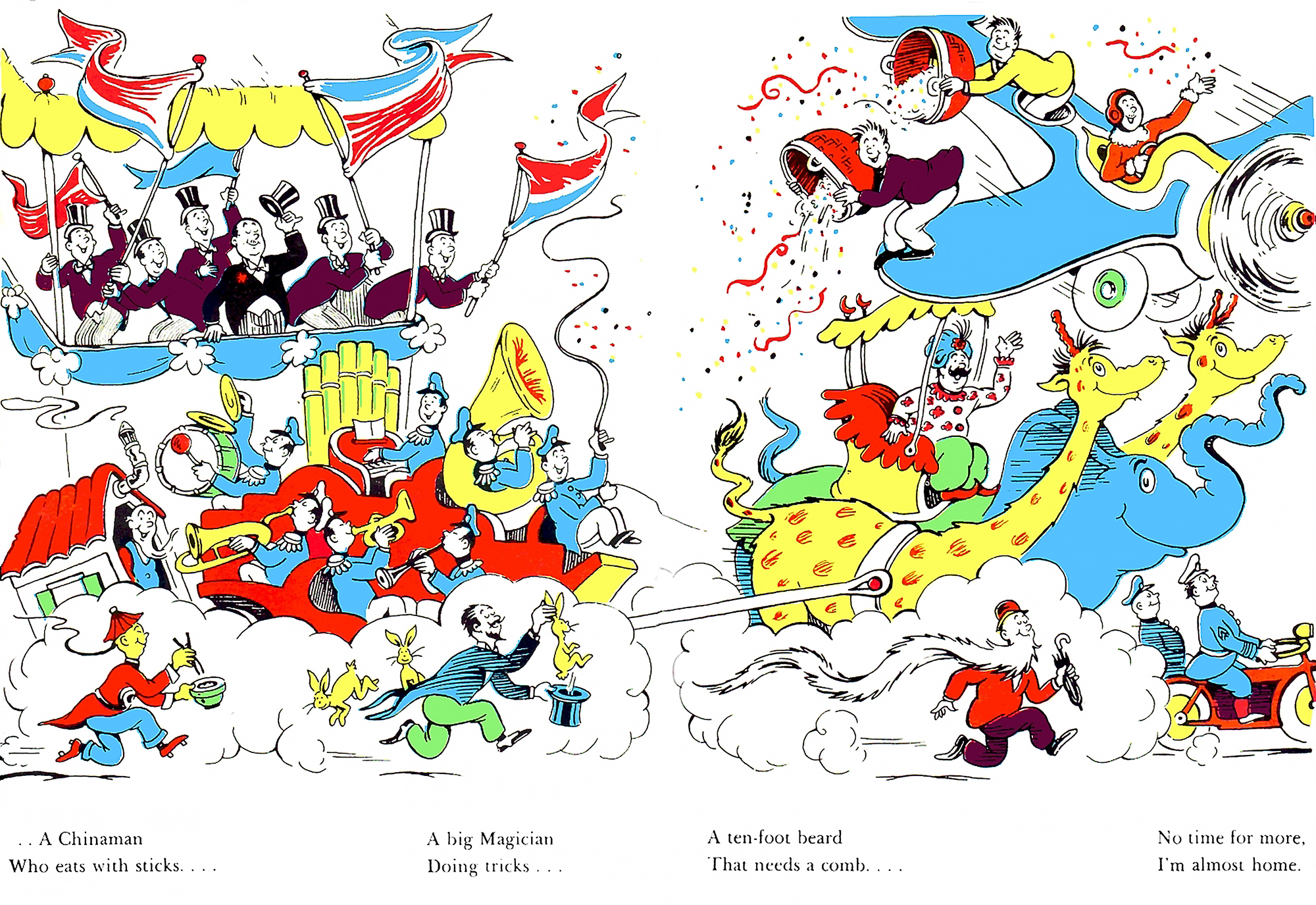
The 1937 tale described a boy who saw a plain horse and wagon on Mulberry Street and, to ease his boredom, transformed them into an increasingly fantastic and spectacular array of things.
All the animals, people, strange creatures, and events were in the boy’s mind, so it matters not whether a particular person had three eyes or five legs – it was a child’s mind at work. Here is the cartoon from the book in question – please click the picture to enlarge it.
Eighty-four years ago, when Seuss wrote this story, comic books were commonly printed on a 4 or 5-color newspaper press, in spot colors, one layer at a time.
The drawings used five inks; red, yellow, blue, green, and black. Yellow was the same across the page, from the trombones and giraffes to the Chinaman’s face and hands. Seuss had no choice about the kind of yellow used – the printers and their union made that decision.
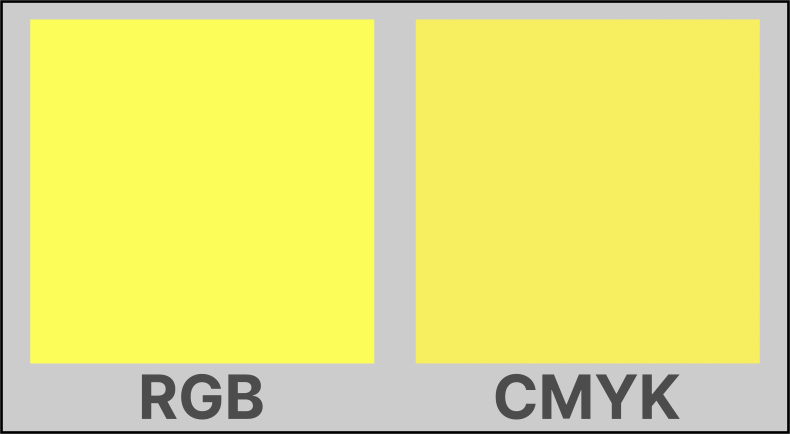
Ink printed on paper is duller than colors on computer screens, and printed colors fade. If you want them to last longer, you make them more colorful.
PDF books online use Jpegs, RGB (Red, Blue, Green), for screen pixels, which are brighter than printed colors and never fade.
Another point is that nobody had an issue with Asian skin having a very slight tint of yellow or with cartoons exaggerating this. Without exaggeration, comics would not be funny, and though it may come as a surprise to our droll Marxist censors, comics are supposed to be funny.
You may click the detail above for a larger version. Notice that two or three of the other white characters in the cartoon have identical eyes to the Chinaman, something our censors overlooked. Using their warped logic, we know these white characters cannot be Asians because they are white, which brings us to another problem. If Katie and Ramon are so fixated on the Chinaman’s yellow skin color, why are they not upset with the other men’s white color? Whites are not white but a creamy pink color, and Indians are brown, not white. Where is the outrage?
The chopsticks, bowl of rice, long black braid, and a conical hat were common to Chinese men in 1937, which our dimwitted censors would know if they studied history. Many Chinamen, as they were called then, wore that hat style in 1937 when Seuss drew the cartoon. They wore it also while building many of America’s railroads.
Rice and chopsticks? Half a billion Chinese eat rice in bowls with chopsticks most days of the week, and in 1937, even more so if they could, considering there was a famine in China that would kill between 5 and 10 million. The racists here are Katie Ishizuka and Ramon Stephens. They think drawing someone with yellow skin, crescent-shaped eyes, chopsticks, rice, and conical hats is an insult to them, just as they believe being colored means one is handicapped.
The Stephens couple continues about the same cartoon:
The text beneath him reads, “a Chinaman who eats with sticks.” In 1978, Seuss updated the text to read, “… A Chinese man Who eats with sticks….” and removed the bright yellow skin and ponytail. The revised character retained the bowl of rice, chopsticks, conical hat, and slanted eyes. Both versions of the “Chinese” man depict him in shoes with an elevated wood base traditional of Japanese footwear called geta.
In 1937 the word ‘Chinaman’ was fashionable to whites and Chinese, but fashions changed. Forty-one years later, in 1978, the term ‘Chinaman’ was no longer fashionable, and neither were long ponytails on Chinese men. Seuss’s publishers (not Seuss) updated the text and removed the ponytail – so what?
Regarding eyes, Asian people have arced eyes, especially when they close them and smile. Again, so what? Such eyes look beautiful. Why do crazy Katie and rude Ramon have a problem with teardrop-curved eyes? The white faces in the cartoon have the same curving eyes. Can our censors explain that? And what have they got against chopsticks?
I remind Katie and Ramon that a young boy imagined all the events in the story, including the Chinaman’s shoes. He was a child and can get details wrong in his fantasies – you pair of party-poopers! Do you lecture your children when they imagine something for fun and make minor mistakes with minutiae? Also, if there were no mistakes, critics might say, “The child’s imagination was not realistic because all kids that age make mistakes.”
Katie Ishizuka and Ramon Stephens continue:
In The Cat’s Quizzer: Are YOU Smarter Than the Cat in the Hat?, the Japanese character is referred to as “a Japanese,” has a bright yellow face, and is standing on what appears to be Mt. Fuji.

To begin with, the title of the book is The Cat’s Quizzer.
I have covered the ‘bright yellow face’ issue above, showing it had nothing to do with racism.
A Japanese? Seuss wrote the book in 1976, 45 years ago, when he was seventy-two. Referring to a Japanese person as “a Japanese” was perfectly fine then, as it is now. Click here to see many authors referring to Japanese this way from 1904 to the present day. In the 1973 book Listening to Japan; a Japanese Anthology, page 75, Jackson H. Bailey writes [emphasis mine], “To the attackers, I, a Japanese, was no less an enemy than the sergeant who crouched beside me in the darkness.”
Bailey had a PhD. from Harvard University in Asian history and languages. Read of the many textbooks about Japan he wrote here. Tell him that saying “a Japanese” is racist. Standing on Mt. Fuji? Is that verboten now in Cartoon Land?
Here is more from our race junkies:
The three (and only three) Asian characters who are not wearing conical hats are carrying a White male on their heads in If I Ran the Zoo. The White male is not only on top of, and being carried by, these Asian characters, but he is also holding a gun, illustrating dominance.
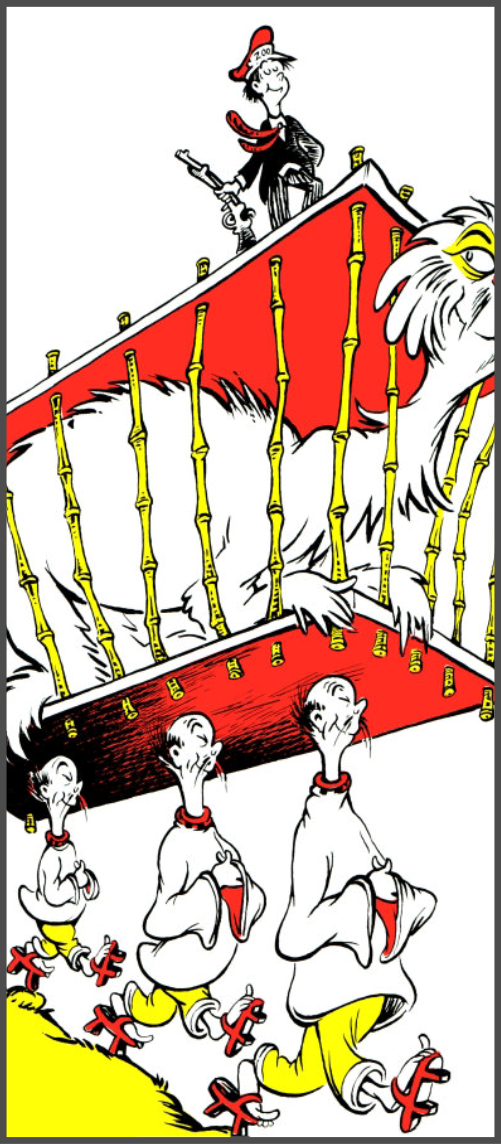
‘If I Ran the Zoo’ is a 1950 story about a tiny boy Gerald (perhaps six or seven years old), who stops to look wistfully at a zoo. Unable to enter, he decides to imagine the kind of zoo he would like to have. Gerald dreams of a zoo populated with ten-footed lions, hens with other hens growing out of their heads, an Elephant-Cat, Flustards and Bustards, Squirrel-like cows, Lunks, families of deer with connected antlers, and camel-like scraggle-foot Mulligatawnies from the Desert of Zind. He envisages catching Chuggs (bean-shooter bugs), Thwerlls (with snarled legs), tizzle-topped Tufted Mazurka (long-necked canaries), propeller-headed bugs, wild Tick-Tack-Toes (with X’s and Zeros), Gussets, Gherkins, Gaskets, a Natch, and an Obsk from the Mountains of Tobsk.
The child fancies himself capturing an It-Kutch, a Nerkle, a Preep and a Nerd, a Proo, a Seersucker, a flock of Bippo-no-Bungus, and a Fizza-ma-Wizza-ma-Dill (world’s biggest bird). Gerald visualizes doing all this with a platoon of different vehicles, gadgets, devices, machines, and many exotic characters, from Persian Princes and Russian Palooskis to Desert Chieftains and Zooski McGrewskis. At the end of Gerald’s giant fantasy, he is still standing outside the zoo. None of the events happened; they were just figments of a 1950 boy’s imagination.
Katie Ishizuka and Ramon left out the giant Flustard beast in the large cage upon the helpers’ skulls. Why would helpers wear conical hats when carrying such heavy loads on their craniums? Why even bring it up? And why say the small child is a ‘White male’? I thought the Left wanted to make sex irrelevant. Isn’t that the idea nowadays? Tsk – you forget your lines. Remember the script, dummies.
And who says he is white? After all, the Asians you mention are white, too, with no color at all. If they are white, and the earlier-mentioned Indian was white, then white does not mean very much in a Dr. Seuss book. The boy could be Indian or Arabian, as far as you know, especially since, these days, a speck of DNA is all you need to define your race. Your beloved Democrat Elizabeth Warren was 1024th part Indian, so you say she is an Indian. Why not apply this reasoning to the child? He could be black, Asian, or any race under those rules.
Also, how do you know the Indian boy’s gun is not a toy gun? After all, in Dr. Seuss’s world, the gun probably fires chewing gum pellets. Why would the boy’s toy gun ‘illustrate dominance’? Neither the giant Flustard beast nor the huge Asian men look dominated or afraid to me, but very jolly. This is why clown Katie and her roomie, Ramon, provide no pictures. A picture is worth a thousand words, and most of those words prove the bumbling duo wrong.
The text beneath the Asian characters describes them as “helpers who all wear their eyes at a slant” from “countries no one can spell.”
The above statement is untrue, as anyone looking at the whole picture can tell.
The cartoon in question is on page 11, whereas the words “countries no one can spell” are on page 12, concerning a different land.
Partly shown here on the right, you can see our young boy-adventurer has found a place populated with strange-looking people in weird hats.
Their eyes are round, and they do not appear to be Asian.
And again, there is nothing wrong with arched eyes. Half the world has them, and drawing or describing them is hardly a criticism. One might object to the use of the word ‘slant,’ but not when you examine its history and definition.
The noun slant means “a slanting direction, line, or plane: SLOPE,” and the noun slope is defined as “a: the tangent of the angle made by a straight line with the x-axis, b: the slope of the line tangent to a plane curve at a point.”
Thus if one’s eyelids angle downwards on a curve, they are, by definition, slanted.
Back in Seuss’s day, it was utterly fine to use the term. Instead of being proud of their eyelids’ shape, the Ishizuka clan decided it was frightful to describe slanting eyes as slanted. “How shocking,” they would cry. “What racism!”
They probably failed their trigonometry exams in school.
I know you will look that up online, Katie and Ramon. Let me save you the trouble.
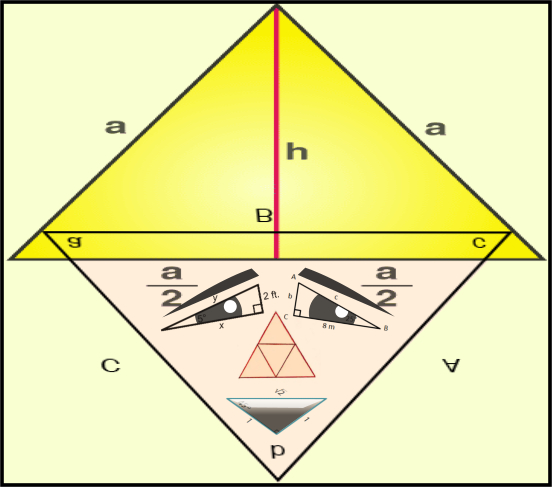
If you can find an example of Seuss genuinely criticizing Chinese people, put it in your crummy paper. If he hated Asians, why would he dedicate his book Horton Hears a Who to “My Great Friend, Mitsugi Nakamura of Kyoto, Japan”?
Our two raceaholics think curved, sloped, slanted, or angled eyes are terrible. They project their racism onto anyone who innocently draws harmless arc-shaped eyes.
What do Katie and Ramon have next?
In And To Think That I Saw It on Mulberry Street, a turban-wearing character is riding an elephant and dragging two White male characters on a cart. One of the White men is smiling while holding a whip above the turban-wearing man and the elephant he is riding on.
The statement above is another lie since there is no such scene in the book, proving they just skimmed through it. Regardless, the entire adventure was a little boy’s invention. None of it happened!

The Indian in a turban who rode the elephant that pulled many different wagons, bands, and political floats (but not two men in a cart), was perfectly safe because the fellow holding the whip was merely cracking it in the air, not using it on elephants or people. I hardly think the Indian and elephant would be cheerfully laughing were someone whipping them.
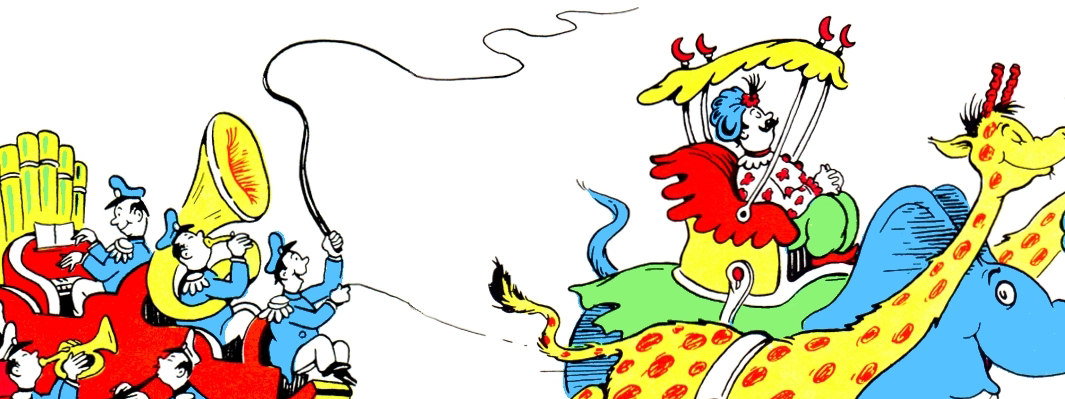
They say the whip was above the Indian; technically, it was not, and the Indian is under a canopy. Again, it is all irrelevant since the entire thing was a boy’s imagination at work.
Examples of subservience also include turban-wearing characters “fetching” an egg for White males (Scrambled Eggs Super!).
The story ‘Scrambled Eggs Super!’ (1953) was once again an elaborate depiction of a young boy’s vivid imagination.
The boy, Peter, is trying to impress his little sister, Liz, in the kitchen, so he makes up an awe-inspiring albeit ridiculous story about how he tracked down various unattainable eggs to make super scrambled eggs.
For his story, Peter invents a range of characters who help him in his quest, and they happily participate, as any young boy like Peter would hope they would.
One of the characters was Ali, who Peter telephoned long-distance to ask if he could fetch a certain cuckoo egg on a steep mountain.
Like all the other fictitious characters who helped Peter in his fanciful story, his pal Ali dropped everything and went to get the cuckoo egg. On the way, hordes of birds attacked Ali, who managed to deliver the egg to young Peter anyway.
Peter praised Ali for being so brave. It was not ‘subservience,’ but a deep friendship imagined by a boy, the very thing catty Katie and resentful Ramon should be encouraging.
What thanks does Seuss get for presenting a brave Indian man to children through a child’s imagination? To be labeled a racist, of course, by a pair of modern, cancel-culture buffoons.
They are so dim they described the single man Ali fetching an egg for his single pal Peter as ‘turban-wearing characters “fetching” an egg for White males.’
Did they read the story at all? It seems not.
Dehumanization is seen in If I Ran the Zoo when a White male says he is going to put a person of color wearing a turban on display in a zoo. The White male states, “A Mulligatawny is fine for my zoo/ And so is a chieftain (referring to the man in the turban). I’ll bring one back too.”
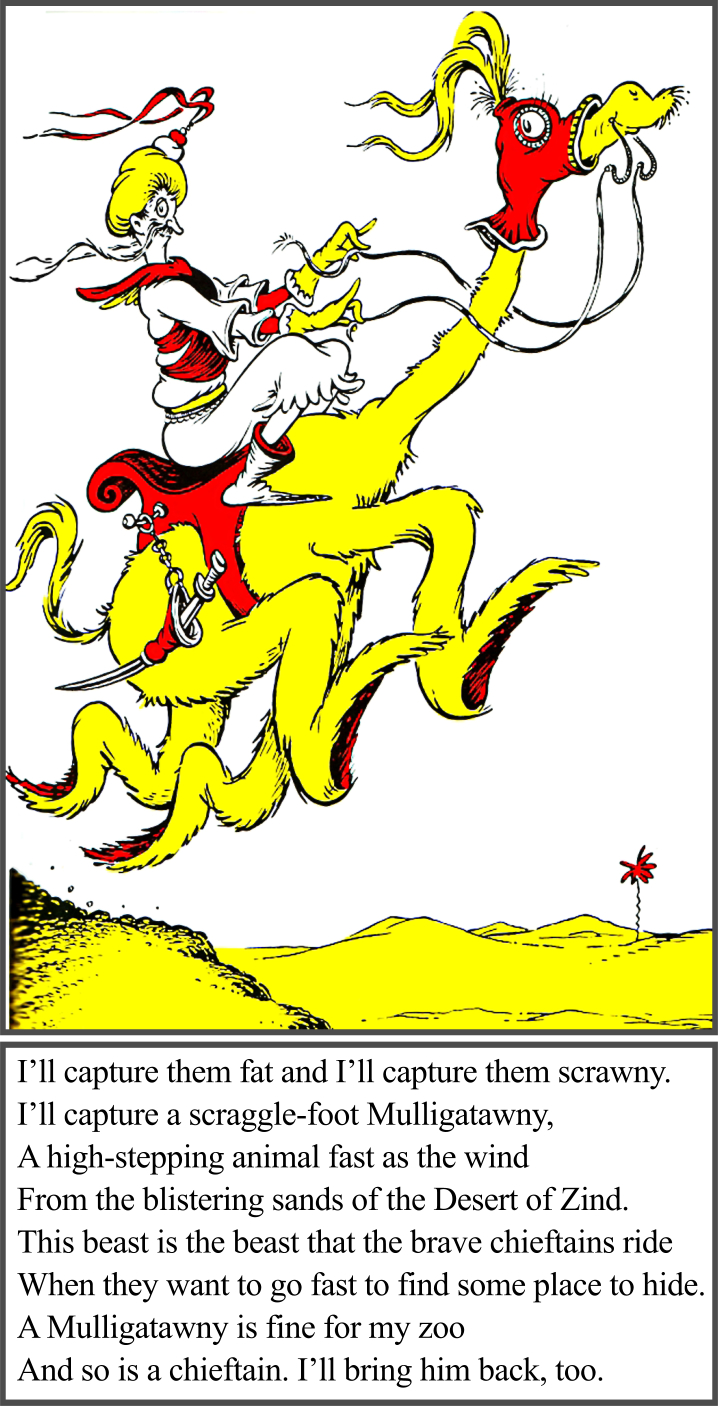
Katie and Ramon will never refer to young Gerald in ‘If I Ran the Zoo’ as a child. Instead, they label him a “White male” and handle him with tongs, like workers in an abortion clinic. Then they preach about ‘dehumanization’ and see no irony.
You may click the cartoon to the right for the large version and text. Gerald does not say he is “going to put a person of color wearing a turban on display in a zoo.”
That is yet another lie told by our drooling white-hating duo.
The little boy is making up a story for his sister and says, “This beast is the beast that the brave chieftains ride… a Mulligatawny is fine for my zoo, and so is a chieftain. I’ll bring him back, too.”
“Bring him back” does not mean putting him on display – where did Katie and Ramon get that idea?
They invented it.
The boy wanted to bring the chieftain back because he was brave. He would add him to his list of friends, like the Indian Ali.
Did Katie bring Ramon back from school when they first met to put her prize on display in a zoo? Come to think of it, in her woke world, perhaps she did. “Look, everyone, I married my very own black! I’m so woke it hurts – come take a look!”
Exotification is seen in the naming the animal the turban-wearing man is riding on, “Mulligatawny”—the name of an actual Indian curry-flavored chicken soup (MacDonald 67). The animal is yellow in color, which reflects the color of the soup.
So what if the boy named the camel-like animal after a soup? He is six years old. The yellow is the same yellow used for the cliff, desert, the brave chieftain’s turban, gloves, and belt. Were they all meant to represent soup, wiseguys? Again, the yellow’s use has to do with spot color printing processes, not racism (see above). Additionally, a Bing search would have shown Katie and Ramon that mulligatawny had numerous meanings in 1950 when Seuss wrote ‘If I Ran the Zoo.’ A few examples:
From: https://english.stackexchange.com/questions/178760/thats-the-mulligatawny
During the 19th century and the days of the Raj in India, many Indian words and expressions entered English, either through trade or the military … It appears that mulligatawny has transferred its meaning to an aspect of the military officer – a form of synecdoche or metonymy: giving orders/stating rules/being an authority, and thus being the rules, order, drill.
From: https://en.wikipedia.org/wiki/Yugoslavia_and_the_Allies
Nov 1943, Airborne Mulligatawny Mission, East of Lake Ohrid, Macedonia – SOE mission attempting to get in touch with the Bulgarian partisans. Both Davies and Thompson were to perish in the attempt to organise Bulgarian resistance.
From: https://www.newspapers.com/image/168259771/?terms=mulligatawny&match=1
(Or see here). A 1908 story about a seemingly doomed steamer ship, the S. S. Mulligatawny, published in The Philadelphia Enquirer.
From: https://www.newspapers.com/image/653806507/?terms=mulligatawny&match=1
(Or see here). A 1907 poem called Mrs. Mulligatawny by Arthur Macy, in The Kansas City Star, features Mrs. Mulligatawny, Mr. Mulligatawny, William and Mary Mulligatawny.
From: https://www.newspapers.com/image/348773257/?terms=mulligatawny&match=1
(Or see here). The poem ‘Increpitude’ by American poet Berton Braley, 1906, is about the Mulligatawny walking the strand, nursing his feet, having a dream, hanging his face, scratching his ear, and being the swellest guy.
From: https://efanzines.com/SFC/ScratchPad/scrat004.pdf
In the middle 1950s … radio serials as well as other ABC programs … [Jimmy] became the main workhorse of the Children’s Hour: the Muddle-headed Wombat in the Ruth Park serial of the same name, the naughty boy in Mr Mulligatawny’s Academy [a children’s radio show] … more about Mr Mulligatawny’s Academy here.
From: https://royalsocietypublishing.org/doi/pdf/10.1098/rsbm.1974.0007
Here, too, are poems that express Gates’s feeling for nature and some that plumb the depths of human emotion and experience. He also wrote a collection of short plays, The mulligatawny medallion (Ernest Benn, 1926).
One can see many more uses of Mulligatawny online and in newspaper and book archives, aside from ‘soup.’ This is called research, Mr. and Mrs. Ramon Stephens and you should always do some rather than make stuff up off the top of your pointy heads. Now, let us straighten out a few more of your lies:
Orientalism can be seen through exotified, stereotypical, and subservient imagery and text of individuals with East Asian and Middle Eastern characteristics. It emerged from books containing human characters and non-human characters. Books with human characters that were analyzed for Orientalism include… On Beyond Zebra…
On the four occasions Seuss’s book ‘On Beyond Zebra!’ is mentioned in Katie’s and Ramon’s 50-page diatribe, they left the exclamation mark out of the title. They are such classy researchers! Western cartoons of Asian characters are not exotic, stereotypical, or subservient imagery. They are how you would expect humor-making cartoonists to depict people with crescent-shaped eyes, black hair, and the various styles of clothing or food they wear and eat. The authors have shown an alarming lack of understanding about cartoons, printing, culture, and storytelling, as they attack and besmirch one of America’s favorite authors.
Search for ‘Kim Jong-un caricatures,’ and there are hundreds. Most of these are made and used by Fake News – the same hypocrites who shame Seuss for drawing Asians with curving eyes. The first three cartoon examples above show how left-winged Western cartoonists depict Kim Jong-un. The fourth, on the right, is how a Japanese anime cartoonist depicts him. Which are closer to reality? If Katie Ishizuka and Ramon Stephens want to cry about exotified imagery, they should type five letters into their search engine: a-n-i-m-e. Here are some more examples:
Japanese cartoon characters evolved huge eyes, nothing like real ones. That is not only exotic; it is Freudian. It reflects some deep-seated mass neuroses concerning eye size. Most Japanese girls like pretending they have enormous eyes and love watching cartoons that affirm this. It is weird. They need to realize that their teardrop-curved eyes are enchanting and be proud of them. It is more than obvious that Katie Ishizuka and Ramon Stephens think curved eyes are something to be ashamed of – I guess it is people like them that have caused Japanese girls to develop eye hysteria.
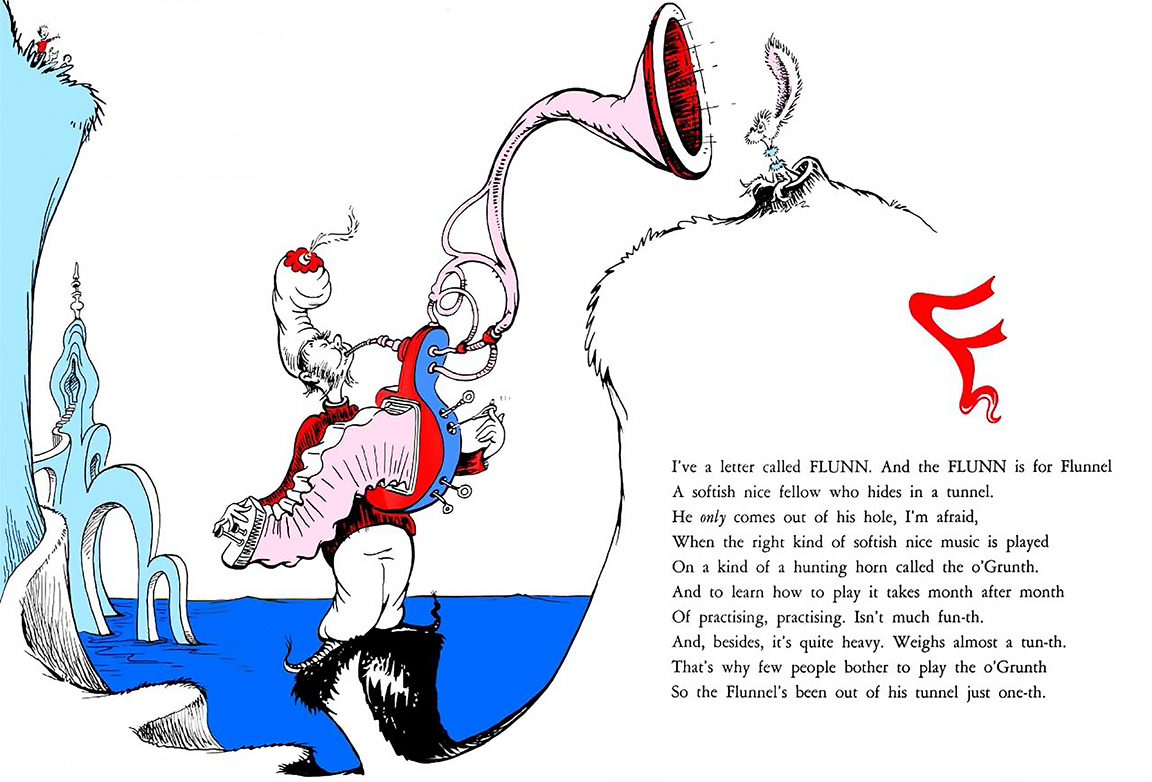
Back to ‘On Beyond Zebra!’ now, and the cartoon that had had cheerless Katie and cluttering Ramon so steamed up.
The story is about a nine or ten-year-old boy who tells a younger boy that he has invented many more letters than the standard alphabet’s 26. The boy describes each new letter and the strange animals they stand for. C might stand for Cow, but Wum is for Wumbus, and so on, in typical Dr. Seuss fashion.
It involves a fantastic journey composed of exotic places, people, animals, letters, and adventures, all made up by the boy.
The character Katie and Ramon object to cannot be defined as East Asian or Middle Eastern.
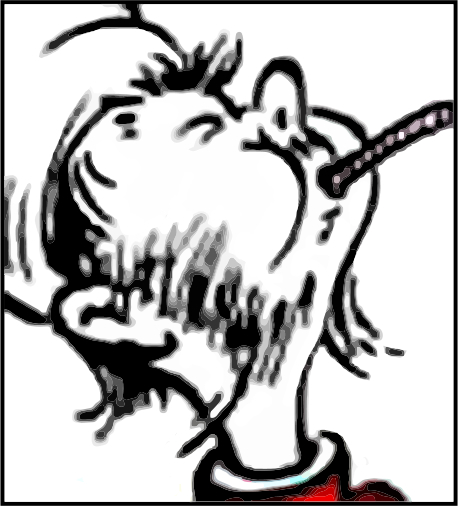
And who cares anyway? He looks like a scraggly out-of-work Hollywood busker, filling in part-time for some rag-tag circus. Who knows which charity gave him the mixed bag of clothes or which costume party he was headed to when he decided to stop and play his o’Grunth instrument? And remember, he is entirely imagined by the child on the cliff to the left. You will have to ask the boy what race the clown belongs to, so you can figure out if he is politically correct.
But wait, the character is pure white, and since our two raceaholics are fixated on each cartoon’s color, and no race at all is pure white, they will have to admit he could not be Asian or Middle Eastern, or for that matter, any race that we know of.
In the 1920s, Dr. Seuss published … anti-Semitic cartoons in Dartmouth’s humor magazine, the Jack-O-Lantern. He depicted a Jewish couple (captioned “the Cohen’s”) with oversized noses and Jewish merchants on a football field with “Quarterback Mosenblum” refusing to relinquish the ball until a bargain price as been established for the goods being sold (Cohen 208).
These alleged ancient comics do not exist anywhere online, and no doubt, our wannabe library promoters are exaggerating their importance while conveniently not showing them. It makes no difference anyway since Seuss was a champion of the Jewish people, fighting anti-Semitism through cartooning. He drew hundreds of comics condemning Americans for not entering WWII to fight Hitler. When the USA finally entered the war, Seuss enlisted and was deployed to the Fox studios to draw propaganda cartoons and animations that helped win the war against Nazis and Fascists, both in Europe and Japan. That work was far more important to Jews (millions of whom were being exterminated) than a couple of alleged sketches he made as a kid.
See 31 of these cartoons in a printable PDF here and hundreds more online. Seuss directly opposed anti-Semitism, pointing out the anti-Jewish nature of Nazism when most anti-Nazi propaganda avoided the issue. The fact that Katie Ishizuka and Ramon Stephens dredged up this pathetic criticism of a man who worked tirelessly for years to help Jews is contemptible. They are not only ignorant of history but shameless to boot.
The same two wretches go on to criticize Seuss for doing caricatures of General Tojo in Japan. Under Hideki Tojo’s command, from China’s invasion in 1937 to the end of World War II, the Japanese military regime murdered [about] six million Chinese, Indonesians, Koreans, Filipinos, Indochinese, and others, including American and Australian prisoners of war.
Seuss did not exaggerate mass murderer Tojo nearly as much as modern far-left cartoonists exaggerate President Donald Trump, and we know Katie and Ramon love and support those caricatures. “Poor Tojo,” they cry. “It’s wacist! Call the waambulance!”
Continued in Why Lefties Knifed Dr. Seuss – Part II


